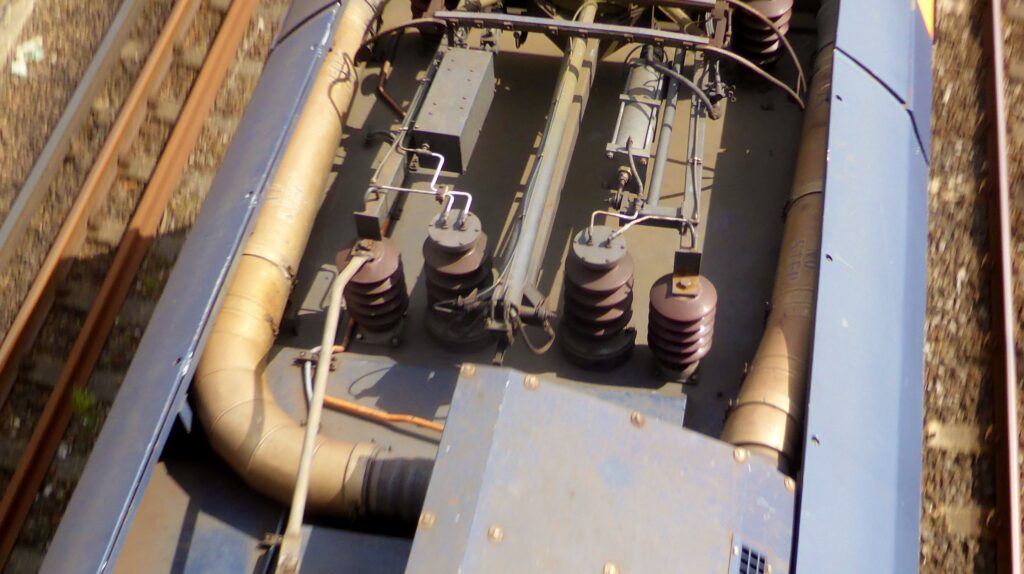Based on IEC, ANSI, and other standards, a high voltage (HV) form is produced as a post-insulator. They apply to systems with 1100 kV of electricity. Porcelain or a single piece of composite material serves as the post-insulator (silicone rubber). Due to its superior mechanical qualities, the post-insulator is widely employed in various applications.
In transformer sub-station yards, post insulators are used in switchgear to support breakers, capacitor banks, and bus bars. These insulators typically experience compression, torsion, and bending forces when in use. They can occasionally be utilized as jumper loop insulators when installed horizontally, vertically, or underhung.
We have various end fitting alternatives, depending on the building designs that follow customer specifications or standards like IEC and ANSI.
What is Post Insulator?
In power systems up to 1100 kV, a high voltage (HV) insulator known as a post insulator is employed. It is made following ANSI, IEC, and other standards. A single piece of porcelain or composite material is the post insulator’s main structural element (silicone rubber). Outstanding mechanical properties are commonly used in many applications because of the post-insulators.
An insulator type for HV applications is the post insulator. They must be created following ANSI, IEC, and other standards and offer pertinent certificates. They are suitable for usage in power systems up to 1100 kV.
Post insulators are sometimes known as line post insulators when used in transmission lines. These flanges have sharp, conical edges. This design encourages a creepage distance that could lead to an electrode pollution issue.
Although composite post insulators are entirely conventional, ceramic materials are used to make the majority of post insulators. Types of composite post-insulators are often assessed based on the quality of the components. The choice of materials should satisfy an insulator’s mechanical and electrical properties.
Read More: What Is The Difference Between Web Design And Graphic Design?
Shed design
The kind and intensity of contamination affect the performance of station insulators concerning contamination. In addition, the shed form has a significant impact, especially when DC systems are used. The following standard shed shapes have been produced by NGK based on accumulated laboratory test data and field experiences on the effectiveness of leakage distance of various shed shapes for AC & DC systems.
Typical Post-Insulator Features
Here, we’ll go over the factors influencing our decision to use post-insulators as our top choice for transmission lines. The following are specific qualities of post-insulators:
- High mechanical strength: Post-insulators frequently experience compression, twisting, and bending stresses. To survive these forces, the insulator must have solid mechanical qualities; otherwise, it would dissolve and be more expensive to repair.
- They are solid and impervious to punctures since they are located in an atmosphere and are subject to pollution, rain, and other climatic conditions.
Designing with Electrical Insulator in Mind
the pin insulator, which is at the live potential, has a live conductor linked to the top. We affix the insulator’s bottom to the earth’s potential supporting framework. The insulator must tolerate likely tensions between the conductor and the world. The flashover distance is the shortest path an electrical discharge can travel between a conductor and the ground, surrounding an insulator body.
- The insulator’s outer surface virtually turns conducting when wet. As a result, the insulator’s flashover distance is shorter. Electrical insulators should reduce flashover distance when the insulator is wet as minimal as possible. The upper surface of the uppermost petticoat is slanted as low as possible to ensure the best flashover voltage while it is raining.
- The rain sheds are constructed, so they shouldn’t affect how the voltage is distributed. They are created in such a way that the electromagnetic lines of their subsurface are.
Post insulation and composite insulation have different properties.
What distinguishes a composite insulator from a post insulator? It’s challenging to compare the two. Two distinct classifications are used for post insulators and composite insulators. Pillar insulators are categorized according to their use, while composite insulators are classified according to their substance.
On the other hand, composite insulators include post-composite insulators, hollow composite insulators, and line composite insulators. Post-insulators come in various varieties, including post-composite and post-porcelain.
In the event of a lightning strike, the discharge between the lower metal foot and the arc-inducing rod causes the renewal current frequency arc to migrate to the arc-inducing rod and burn, shielding the insulated wires from harm. A dovetail joins the movable pressure block and pressure block seat to prevent the wire from being scratched when it moves due to thermal expansion and contraction.
The composite insulator outperforms electric porcelain insulators in insulating performance and creepage distance, increasing the level of anti-pollution and enabling it to meet user requests. The insulation shield is constructed of organic composite material with excellent insulating, anti-aging, and flame-retardant properties. It can be installed on the upper metal cap’s exterior side to protect the insulation.
FAQs
Post insulators are suited for low- and high-volume transmission lines up to 150kV, whereas pin insulators are acceptable for transmission lines up to 33kV. Post insulators can contain one or more stags, but pin insulators only have one stag.
Insulators can be made from various materials, including plastic, rubber, mica, wood, and glass. The electrical system uses particular insulating materials such as porcelain, glass, steatite, polymer, ceramic, and PVC.
The arrow For overhead transmission lines, insulators insulate the power conductor from the earth. The cross arm of the supporting structure is attached to the Insulators.

